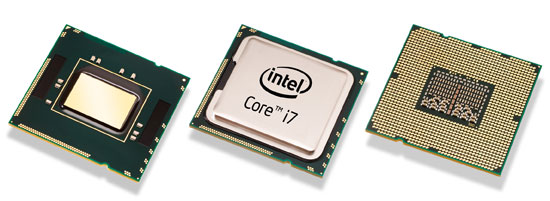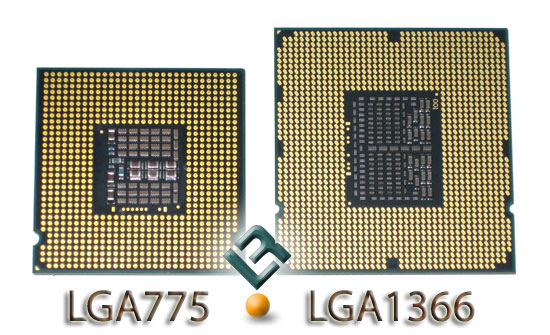Intel Core i7 920, 940 and 965 Processor Review
The Core i7 Series Arrives

Intel has finally lifted the embargo on the yet-to-be-launched Intel Core i7 processors and the Intel X58 Express chipset. Intel strongly believes that this new platform will be the must have work horse for digital media & gaming enthusiasts for many months to come. With so much to talk about this new platform we made the decision to focus just on processor performance for this article and then take a deeper dive at other features in the weeks to come. This should work out nicely as the processors won’t be available to purchase until later this month and many companies are just now getting us production grade triple channel memory kits and video card drivers for this new platform.

The Intel Core i7 Processor (known as Nehalem internally) has some very big architecture changes as you can tell from the picture above. The new Core i7 processor has 1366 pins and as a result the size of the processor, socket and heat sink mounting brackets are all larger than LGA 775 based processors that have been out now for a couple of years. The die size of Core i7 processors is 263 mm2 and the transistor count is 731 Million.

Taking a look at the die of the Core i7 processor we see a first for Intel processors — the integrated memory controller. This on-die, triple channel, DDR3 memory controller is unique in the fact that it allows consumers to run three memory modules together for optimal performance. By moving to an integrated memory controller and triple channel memory the platform has over 25GB/s of throughput between the processor and DDR3 memory modules!
For those that follow processor architecture you will notice a brand new cache structure on the Core i7 diagram shown above. All Intel Core i7 processors feature L1, L2, and shared L3 caches. Before, Intel Core 2 Duo and Quad processors had just an L1 and L2 cache. The break down on the cache is as follows: there is a 64K L1 cache (32K Instruction, 32K Data) per core, 1MB of total L2 cache, and an impressive 8MB chunk of L3 cache that is shared across all the cores. That means that all Intel Core i7 processors have over 9MB of memory right there on the 45nm processor!
Can it get any better than this?

Of course it can! The new Core i7 processor has a huge list of improvements that have been made to it.
- New SSE4.2 Instructions
- Improved Lock Support
- Additional Caching Hierarchy
- Deeper Buffers
- Improved Loop Streaming
- Simultaneous Multi-Threading
- Faster Virtualization
- Better Branch Prediction
Intel always told us that Hyper-Threading was not dead and they were right as the technology has surfaced again and is enabled on all of the Core i7 processors. With Hyper-Threading enabled on quad-core Core i7’s processors the operating system sees eight virtual cores that can be used. Intel has told Legit Reviews that when Hyper-Threading originally came out the idea was solid, but that the Pentium 4 processor might not have been the best processor to bring it to market. The Core i7 series should highlight all the strong points of Hyper-Threading as they are calling it Hyper-Threading “done right” now. If you want a deeper look at the Intel Core i7 architecture take a look at this presentation that was given at the Spring 2008 IDF and this one that was given at the Fall IDF.
Intel will be releasing three Core i7 processors and all have a TDP of 130W and an on-die shared L3 cache of 8MB. All current Core i7 processors are not intended for multi-processor motherboards, so it has only one Quick Path Interconnect (QPI).
- Core i7 965 Extreme Edition – 3.2GHz with 8MB Shared L3 cache and a 1×6.4GT/s QuickPath interconnect – $999
- Core i7 940 – 2.93GHz with 8MB Shared L3 cache and a 1×4.8GT/s QuickPath interconnect – $562
- Core i7 920 – 2.66GHz with 8MB Shared L3 cache and a 1×4.8GT/s QuickPath interconnect – $284
Now that we know what the general processor improvements are let’s take a closer look at the chipset changes.

Comments are closed.